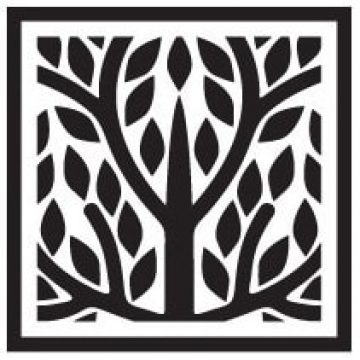by Frank Pellet
(Frank Pellett is an LDS father of 4 (soon to be 5) software developer living in Utah. He enjoys reading, family, and light discussions about many topics, especially those that involve sharing experiences and gleanings about making your way through life.)
One of the Biblical teachings that always gets to me is the misquoting of a verse in Genesis, where God creates Eve.
Genesis 2:18 And the Lord God said, It is not good that the man should be alone; I will make him an help meet for him.
Often, when I hear this quoted, it’s put as a single word – helpmeet. The definition taken from this is something like a maidservant. This is used to show that God made women as subservient to men. However, this is not the meaning of the pairing of words.
Meet, on its own, means equal. In this, God is saying that He will make Adam someone equal to him, that can be a help to him. This does not place one above the other any more than my helping you do something makes me your servant.
As with Adam and Eve, marriage between a man and a woman is a companionate relationship. They must work together to get the greatest accomplished. The later comparison of marriage to being “equally yoked” is very apt, as one is not pushing or pulling the other and neither is leading, but both are working together to go where the master (God) desires them to go.
And, if you are looking for someone to share your life with, just remember you are looking for an help – meet for you, not an helpmeet to be owned by you.






18 Responses
The best help mate I’ve ever had is my dog, He’s more loyal than any human counter part I’ve ever encountered. Sorry, I just couldn’t resist.
Nice first blog
Great definition of the term, help-meet. Thank you.
I like this definition much more than what I’ve always been taught. : )
Fortunately, I have always been taught this definition (meet=equal). However, I have heard people occasionally use the helpmeet/maidservant definition, too. These people tended to be men who liked to get their wives to type their term papers for them.
I have always internalized it like you, April. I am glad I saw that term as equality!
Robert Alter, an expert translator and scholar of the Hebrew Bible, notes that the word translated as “help meet for him” is often used for a military partner, someone who stands beside you in battle, and it is always used for someone of equal or superior rank. In his translation of Genesis, he uses “a sustainer beside,” which I like a great deal, and which has some resonance for LDS church practice, too–“sustaining” our leaders becomes much more than merely _following_ them if we take this Hebrew word as a model.
Oh cool, I had never hear this before.
I went into detail about this and the Hebrew behind it here.
http://www.faithpromotingrumor.com/2007/08/playing-fast-and-loose/
Thanks, Frank!
I also appreciate looking at the definition of helpmeet in this way. I’ve also heard that the pre-translation Hebrew word for “help” is more all-encompassing and could mean help from both a superior or equal position.
At the same time, given the sexist nature of this entire section of the scriptures, the modicum of reassurance that this reading gives me, is not enough to convince that there isn’t a hierarchical relationship being established here.
I have heard some interpretations of the Adam and Eve story that are quite empowering to me as a woman. This definition of “meet” is one of them; as is the idea that the “rib” thing is an analogy for women and men walking side by side as partners; and there was also Gordon B. Hinckley’s interpretation of the sequence of the creation: http://lds.org/general-conference/2004/10/the-women-in-our-lives?lang=eng In his account, the creation story represents a hierarchy of creating more and more complex organisms, with God first creating nonliving organisms, then simple living creatures, then more complex living creatures, then man, and finally, woman. Hinckley’s interpretation makes sense to me not because I believe women are better than men (I do not believe that) but because in my college human anatomy text, the male reproductive system took up a few pages, while the female reproductive system had its own chapter. Clearly, the female body is more complex. I mention this not to say that a woman’s value is in any way defined by her reproductive capacity, but because I have heard some people imply than man came first in the Adam and Eve story because he was more important, and woman was more of an afterthought, thrown in later to make life easier for a man (e.g., be a “helpmate”). Hinckley’s interpretation of the creation, as well as the definition of “help meet” described in this post, go against this sexist interpretation of the story. (Other sexist interpretations of the story, however, are unfortunately reinforced by current LDS doctrine, so I can understand your frustration.)
This is an interesting interpretation April, and one that I hadn’t heard, but I’m starting to wonder if this is the basis for some very sexist remarks I’ve heard over the pulpit to excuse the “way things are” because “women were created last, so they were the best and final creation”. I actually heard that last part in a SM talk by a man, so it’s a very real sentiment in the Church. But complexity does not equal better in my mind, so I actually like this version of the creation story.
I think the use of a rib from Adam (at least allegorically) was also good to emphasize that men and women are made from the same stuff, not one made from the good dust and one from the bad. If you’re going to go for unity in two beings, I cant think of anything better to use than a rib.
Could you imagine – “Let us take a sixth toe from man and make a woman”? I’m glad the usage of rib has even survived as long as it has over the centuries.
This is why I love language!!
Excellent post! I hated the term before I studied it in Jewish scholarship… made a world of difference. I am so glad that the true definition is being embraced, thank you so much for posting!!
I appreciate all attempts to create equality within religion, but I struggle with the story of the creation of Adam and Eve, not because of the term used but because it so clearly defines the underlying problematic viewpoint of Patriarchal religion.
Man comes first. He needs a companion. Woman is created as his – help meet, equal, whatever it be – she is created for him, from him. The story is told from a man’s perspective (and man comes first), recorded and interpreted and preserved by man (and it’s all Eve’s fault). I’m not really feelin’ much better about my existence, because I am still being put in my place – I was created to support, stand, and fight next to (?) man.
[…] Thresholds and Becoming Equal Partners by Bruce C. Hafen Helpmate Vs. Help Meet by Frank PelletThe Curse of Eve by […]
Shouldn’t the title be Helpmeet vs. Help Meet?